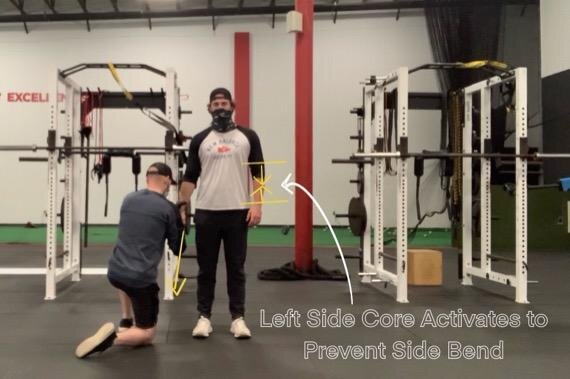Low Back Pain? Improve Your Lateral Stability With These 3 Exercises
Written by Jared Packer
Pain changes the way we move. It is natural to avoid discomfort. When a movement hurts, our brain automatically tries to find a different way to achieve that task.
If rehabilitation from an injury is incomplete, sometimes the muscles we avoided using will remain underactive. This happens often with low back pain, and can lead to recurrent episodes.
It is also not hard to understand how incomplete rehabilitation results in decreased performance. This problem can manifest as a lack of lateral stability. In this blog, we highlight what lateral stability is, and how it can help lower back pain.
What is Lateral Stability?
For the purpose of this blog, lateral stability is the ability to efficiently coordinate movement while withstanding side to side forces placed on the body.
Example: Can you change directions effectively? You need lateral stability to stop your momentum and not fall over.
If you lack this type of control, your performance will suffer, and you will be at higher risk of injury.
When you stop suddenly, a series of muscular contractions occur to stabilize your body. One way to test the integrity of this system is through the Lateral Chain Arm Pull Test (LCAP).
Lateral Chain Arm Pull (LCAP) Test
The LCAP tests the muscular activity necessary to resist side to side forces. This will test the same side hip and the opposite core (obliques, QL) of the arm performing the exercise. I learned this from Erson Religioso’s course at Modern Manual Therapy.
Test.jpg)
You can grab a friend to help test this out on you. Have them hold your hand and wrist and pull downwards and slightly outwards, starting at a low intensity and gradually increasing.
If you’ve identified a weakness on one or both sides, use the following exercises to help correct any imbalances.
3 Exercises to Improve Lateral Stability
Here are 3 lateral stability exercises that will improve lumbar stabilization:
1. Short Lever Side Plank
This exercise is excellent for activating the obliques, and training proper positioning of the pelvis and rib cage. You can do this on both sides, but target the OPPOSITE side that tested weak on the LCAP.
2. Standing Kettlebell March
Once you’ve activated the lateral chain in side-lying, you want to challenge your nervous system in a standing position. The Standing Kettlebell March is a great way to accomplish this. Again you can do this on both sides, but emphasize the SAME side that tested weak on the LCAP.
3. Single Leg Drop Squat with Chop
After you can demonstrate stability with the Standing Kettlebell March, you will want to challenge yourself with a faster movement. The Single-Leg Drop Squat With Chop is a great selection for this, as the weighted med ball can help to facilitate activation of the opposite side core. Training both sides is useful, but emphasize the SAME side that tested weak on the LCAP.
Performing these exercises will help you to improve your lateral stability. Although these exercises are not a replacement for physical therapy, they may prevent further injuries due to lack of lateral stability.
_____________________________________________________________
There are a lot of options for exercises to progress to, which continue to add speed and complexity. Often these can help to correct this imbalance, improve lateral stability, and decrease lower back pain.
If you are struggling with lower back pain and wanting to improve your lateral stability, we are here to help. Contact us to take the first step to get back to doing what you love.




